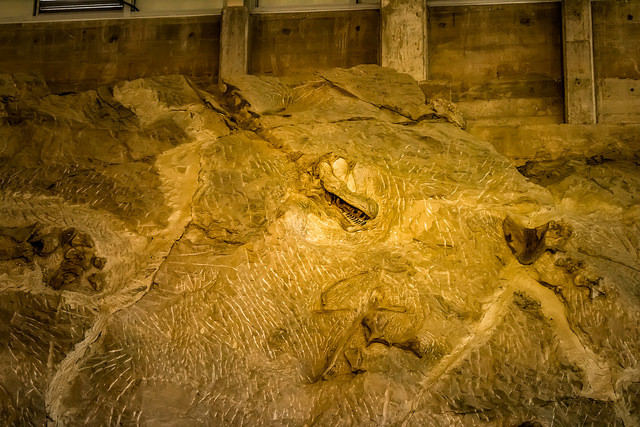Recent fossil discoveries in China are now pushing scientists to rethink theories regarding the evolution of dinosaurs.
On Tuesday, British journal Nature Communications released a study announcing the latest addition to the family of neosauropods - a group of plant-eating dinosaurs which may include the more popular dinosaur, brontosaurus.
Lingwulong shenqi, as it is called, lived during the Jurassic Period, approximately 174 million years ago. During this time, East Asia - where modern China can be found, had split from the supercontinent Pangea.
The giant creature, whose name means "amazing dragon Lingwu" in Chinese, carries the common traits of sauropods, which means it has the long neck with a small head, long tails, and pillar-like legs.
Scientists were baffled on this recent fossil discovery. Dr. Philip Mannion of the Imperial College London told BBC that the giant's presence in Asia was unexpected and may contradict to their initial findings.
"Not only is it the oldest member [of this group], but it's the first ever from Asia. For a long time it was thought that neosauropods didn't get into Asia during the Jurassic," the scholar said.
Furthermore, it was previously believed that neosauropods thrived around the Late Jurassic period, which is between 163 million and 145 million years ago. But as stated earlier, the presence of Lingwulong 174 million years ago suggests that its kind may have already been roaming Pangea at a much earlier period - the Middle Jurassic.
"The discovery of Lingwulong pushes back the origination times of many of the groups of sauropod dinosaurs that we think of as most iconic, and challenges many conventional ideas about the early biogeographical history of dinosaurs," Mannion added.
Dr. Cecilia Apaldetti of CONICET-Universidad Nacional de San Juan in Argentina, meanwhile said that the Linwulong discovery further establishes the fact that dinosaurs do have "an unusual ability to innovate anatomically" in order for them to "dominate and prevail" in any terrestrial ecosystem for a long time.
The research, which was spearheaded by the Chinese Academy of Sciences in the person of Prof. Xing Xu, excavated fossil fragments from what is thought to be 10 different Lingwulong individuals. The largest that has been dug belonged to a 17.5 meter (57 footers) Lingwulong.
During its time, Lingwulong is thought to have lived in a humid environment teeming with vegetation such as ferns, conifers, and other kinds.
Its long neck may have served access to taller plant sources but scientists presume that Linwulong preferred grazing on low, soft plants found on the ground.
Sauropods are considered to live in herds, as what is also evident with the numerous Linwulong individuals discovered in the dig sites.






